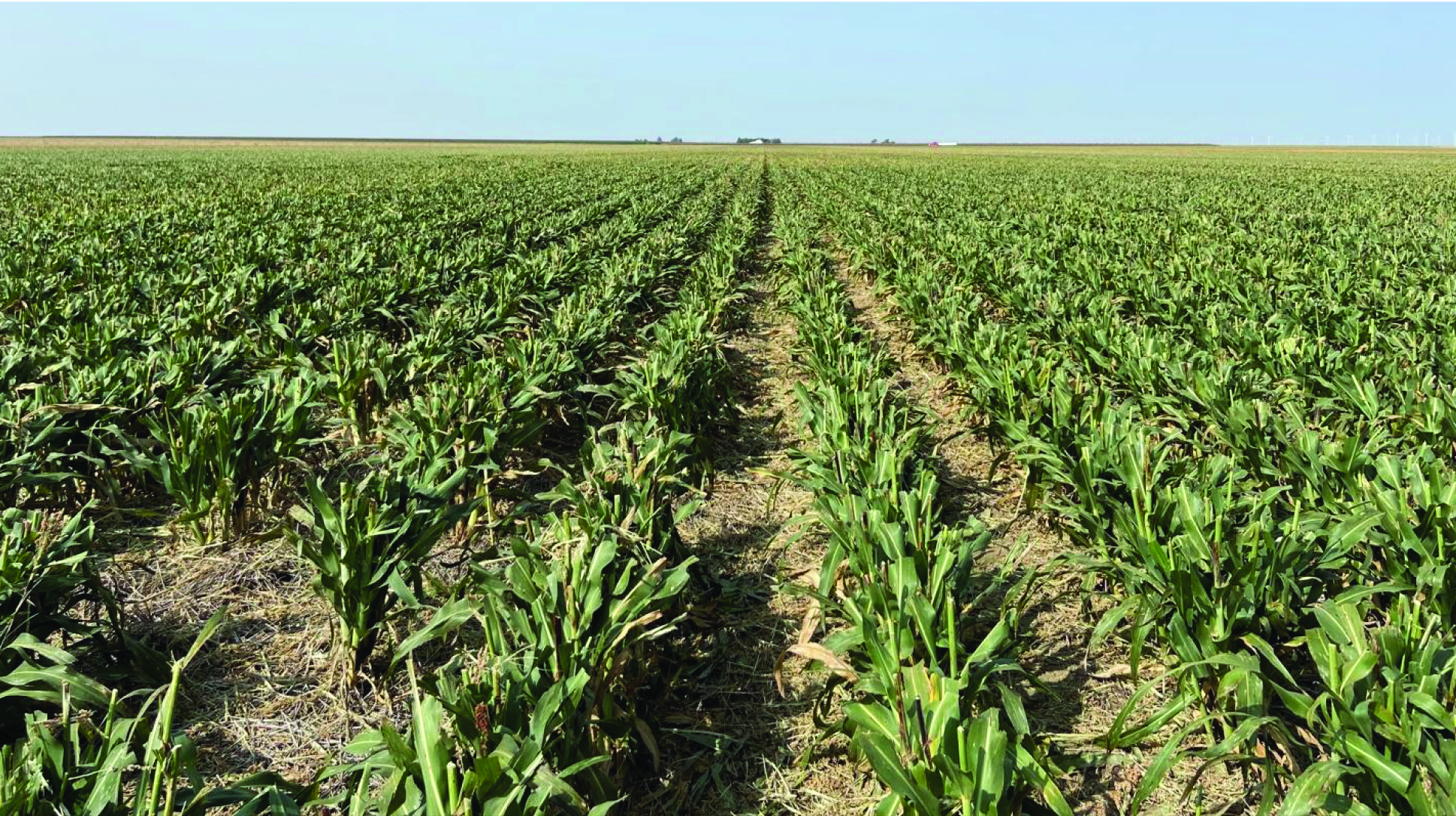Residue grazing considerations for soil health

According to Water Education Colorado, beef cattle are the top agricultural commodity in our state, with nearly 2 million of those cattle and calves residing in eastern Colorado. Simultaneously, pastureland accounts for 88% of the decline in agricultural lands nationally.
This leaves cattle producers searching for alternative feeding solutions. These alternatives could include intensive feeding in a feedlot setting or baling crop residues for feed. However, sourcing hay and grain can be expensive and can include a high environmental cost as well. Baling can increase this environmental cost and detrimentally compact the soil. A better solution might be grazing crop residues, which may benefit both the cattle producer and the crop producer.
Producers may choose to graze crop residues for a variety of reasons that can be mutually beneficial. Some of these reasons could include increasing farm diversity, soil fertility enhancement, the reduction of stocking rates on pasturelands and utilizing an alternative feed source. Some principles to take into consideration when making this decision should include the amount of residue being removed, treading and compaction created by the hoof action of the ruminant animal and the addition of nutrient cycling through manure.
When considering treading while cattle are grazing, all aspects of animal behavior should be considered, including walking, resting, drinking and ruminating. The treading by the animal can cause soil compaction concerns to arise, especially in a field being planted to a crop the following season. Soil compaction is measured in a few different ways and depends upon soil texture, initial bulk density, water content, organic matter content, crop residue cover and the compaction stress that is applied to the soil. Generally speaking, clayey soils will be more prone to compaction stress at a given water content than sandy or loamy soils.
Something else to keep in mind is that grazing will greatly reduce the amount of residue left in the field for the next growing and planting season. This will likely be around 25% residue removal when grazing is done correctly. Residue possesses an elastic property that can reduce the impact of external force on soil. Meanwhile, grazing can increase the external force on soil. Compaction risks include the reduction of soil porosity, aeration, infiltration and increased field runoff. This can result in reduced crop and livestock production, soil fertility and environmental quality. All of these risks indicate that grazing crop residues should be done with care and consideration.
When done well, grazing residues can provide an efficient use of resources, increased soil productivity and improved environmental quality, which will transfer into increased livestock and crop production. Soil fertility can be increased by better nutrient cycling stimulated by both the digestive system of the animal and the improved organic matter breakdown from the hoof action of the animal, both of which will increase nutrient availability to the plant.
Another benefit of incorporating livestock into a cropping system is the addition of manure as a fertilizer source. As a ruminant animal grazes and digests, more than 60% of the ingested nutrients are returned through manure. In addition, any supplemental feed for the cattle can add small quantities of carbon and nitrogen to the field.
Overall, crop yield has either seen no effect or an increase after grazing. This is likely due to increased soil fertility and improved microbial properties of the soil after grazing. A decrease in crop yield is unlikely and can be correlated to poor grazing practices such as overstocking or grazing a field under wet conditions.
Cattle health considerations include forage nitrate and prussic acid levels. High levels of nitrates in forage can be caused by stress to the plant typically seen from drought or hail. High prussic acid levels are seen in young sorghum directly after a frost or freeze and should dissipate as the plant matures. Both nitrate poisoning and prussic acid poisoning can be detrimental to a cattle herd. If you have questions or concerns about either of these, reach out to your local Extension specialist for testing and education.
A couple of online tools to help producers through the decision-making process of grazing crop residues include the “Corn Stalk Grazing Calculator” from the University of Nebraska and the custom rates survey from Colorado State University Extension, which includes land rental and custom rates for producers across the state. As always, your local Extension specialist can help answer your questions and walk you through the tools available.
Catie Green is an Extension specialist with the Golden Plains Area district for Colorado State University.



